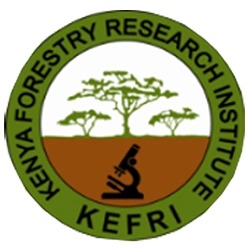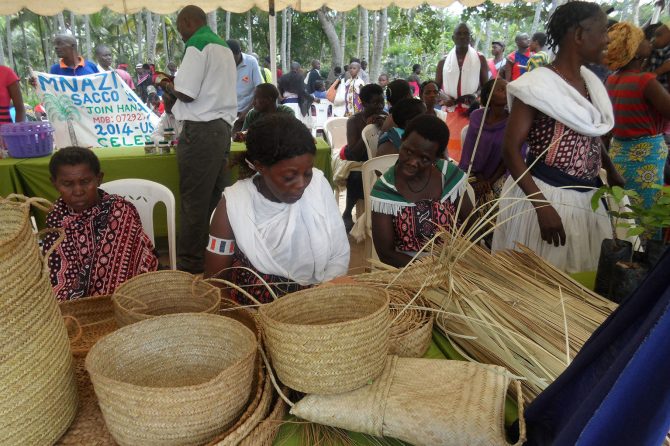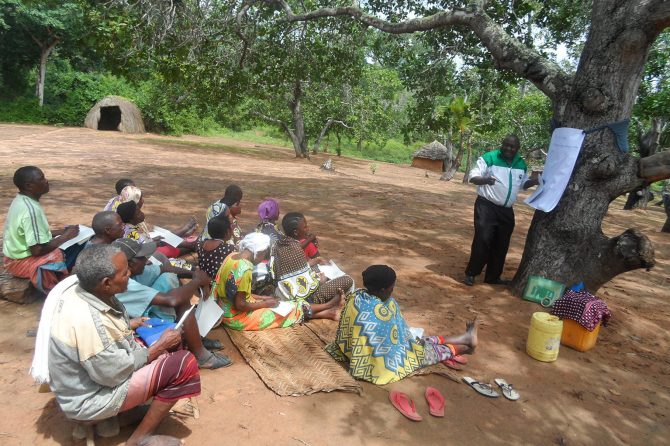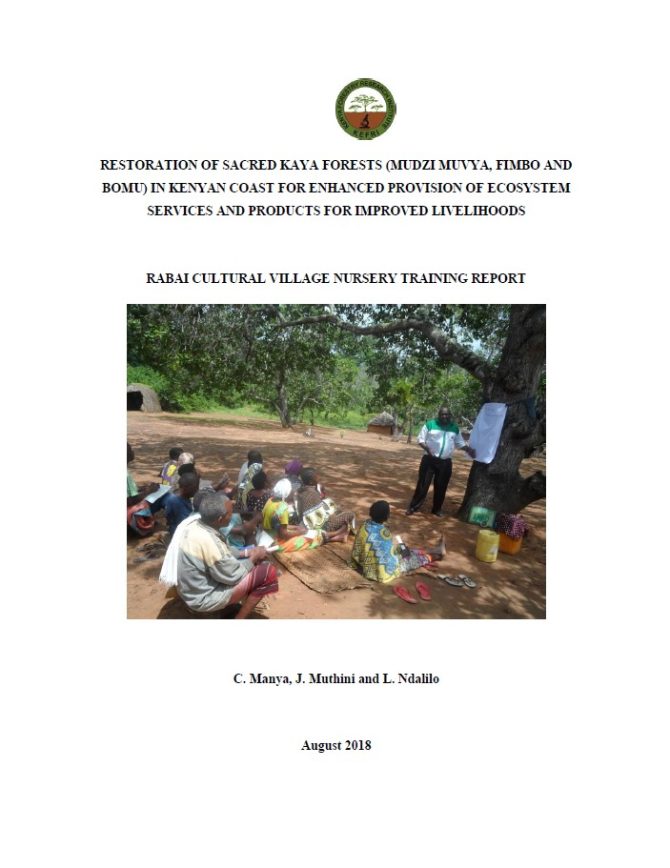2017 KENYA
Restoration of Sacred Kaya forests in Kenyan Coast for enhanced provision of ecosystem services and products for improved livelihoods
Kenya Forestry Research Institute (KEFRI)
Community / field-based implementation
Landscape
Overview
Kaya forests are unique multi-functional socio- ecological production landscapes that provide direct and indirect benefits for human wellbeing. These forests are increasingly being degraded due to rapid population growth, overdependence on natural resources by local communities and cultural erosion brought about by modern education and religion. The weak enforcement of laws governing the conservation of these forests coupled with the loss of cultural values and practices that have traditionally been used to conserve the forests present conservation challenges that require urgent holistic intervention. In view of this, this project aimed: (1) To enhance the capacity of local communities to undertake restoration of degraded sites in Kaya forests; (2) To initiate successful nature based enterprises for biodiversity conservation and socio-economic development; and (3) To enhance the capacity of local communities in climate change adaptation and mitigation through conservation of biodiversity and cultural heritage.
Key achievements
- The most important achievement of the project was improved capacity of local communities to undertake restoration of degraded sites in Kaya forests, and regularly monitor the recovery of replanted sites using a community-based monitoring tracking tool. This can serve as a model for ensuring sustained long-term community-led conservation efforts.
- The operationalisation of a community seed bank and tree nurseries has sustained restoration activities by availing quality indigenous tree species seedlings, provided a good starting point for conservation of landraces and raised awareness on the importance of landraces among the community. Up-scaling of the seedbank is expected to further improve farmers’ access to resilient and affordable seeds for traditional crop varieties.
- The project has also contributed to enhanced sales of value-added and nature-based products and services (eco-tourism, basketry, bee-keeping and traditional artefacts), thereby contributing to increased household incomes.
Lessons
- Partnering with community groups enabled the project to penetrate the communities, and enhanced ownership of project activities by the local communities. Facilitating the implementation of activities by the community made it easier to achieve project objectives. Moreover, partnerships with other authorities such as relevant ministries of the county governments, NGOs and other stakeholders enhanced the project visibility, increasing the potential for upscaling project activities.
- Effective training of community groups enabled them to act as agents of change. Improved capacity of local communities to undertake restoration of degraded sites in Kaya forests, and regularly monitor the recovery of replanted sites using community-based monitoring tracking tool can serve as a model for ensuring sustained long-term community-led conservation efforts.
- The project also found that there is need for support to scale up project activities to meet the demand from other Mijikenda communities.
Project location
Organisation

Kenya Forestry Research Institute (KEFRI)
- Sector
- academic/ research institute
- Country
- Kenya
- Website/SNS
- https://www.kefri.org/
Related products
Rabai Cultural Village Nursery Training Report
- Publisher
- Kenya Forestry Research Institute (KEFRI)
The Rabai cultural village was started in February 2013 and registered under the Ministry of culture and social services in the same year following the realization by the local community of the need to conserve their culture and the kaya forests. Traditional healing practices using herbal medicine is a key activity in the cultural village and thus the disappearance of key herbal plants used in the cultural village has necessitated the need to train the group on appropriate nursery management practices in a bid to ensure sustainable production of medicinal trees and wild food plants used by the group. Furthermore, the village has established a community nursery group focusing on raising indigenous medicinal plants in the kaya but lack of knowledge on the propagation of some difficult to propagate species as well as inadequate knowledge of best nursery management practices has been a hindrance to their activities.
Relevant projects
Projects of the same year
Aichi Biodiversity Targets
Aichi Biodiversity Targets
-
Awareness increased
-
Habitat loss halved or reduced
-
Sustainable agriculture, aquaculture and forestry
-
Protected areas increased and improved
-
Genetic diversity maintained
-
Ecosystems and essential services safeguarded
-
Ecosystems restored and resilience enhanced
-
Knowledge improved, shared and applied
Sustainable Development Goals
Sustainable Development Goals
-
Zero hunger
-
Climate action
-
Life on land


